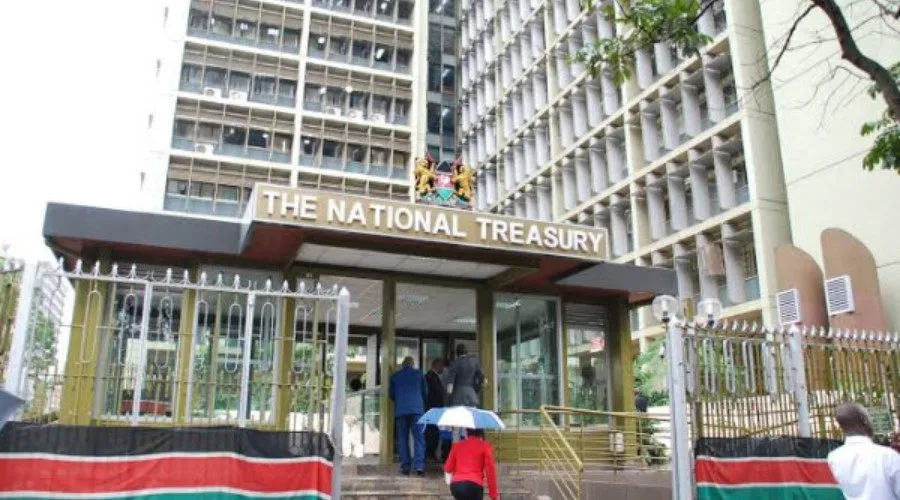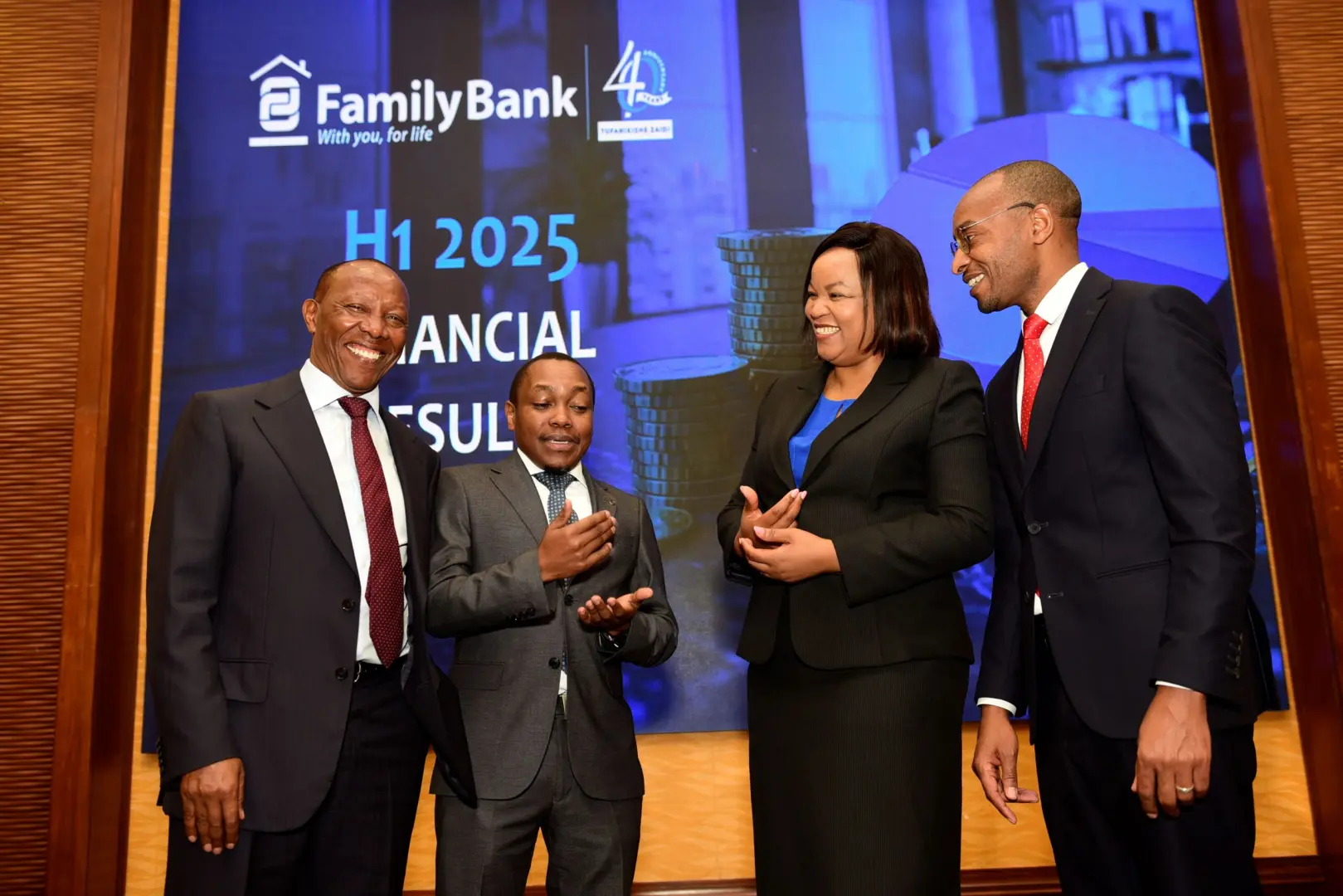In a recent development that has stirred significant discussion among economists and policymakers, Kenya’s National Treasury and Economic Planning headquarters announced that the government exceeded its recurrent budget target for the fiscal year 2024/25 by KSh193 billion. The government’s recurrent expenditure reached KSh1.5 trillion by December 2024—well above the originally targeted KSh1.29 trillion. This performance, revealed in a supplementary budget presentation before the legislature, offers both a glimpse into the country’s spending dynamics and a cause for reflection regarding revenue collection challenges and broader fiscal sustainability.
This comprehensive analysis explores the context behind the overspend, the challenges in revenue mobilization, and the potential policy implications for Kenya’s economic future.
Understanding the Recurrent Budget and Its Implications
What Is the Recurrent Budget?
The recurrent budget covers the government’s day-to-day operating expenses—wages, pensions, routine maintenance, and administrative costs. It is distinct from capital expenditure, which is earmarked for infrastructure projects and long-term investments. In Kenya’s case, the recurrent expenditure is particularly significant as it reflects the government’s commitment to delivering essential services, but it also poses a challenge when spending outpaces planned targets.
For the financial year 2024/25, the National Government had set a recurrent budget target of KSh1.29 trillion. However, by December last year, the actual expenditure reached KSh1.5 trillion—a KSh193 billion overshoot. It is important to note that this figure excludes a separate KSh30.4 billion allocation for Parliament and the Judiciary.
Drivers of the Overspend
The supplementary budget statement clarifies that the primary drivers behind the higher-than-targeted recurrent expenditure were increased pension payments and greater-than-expected spending on operations and maintenance (O&M). Rising pension obligations are a common challenge in many governments, especially as the workforce ages and previous fiscal promises become more expensive to sustain. Similarly, the surge in O&M costs points to operational inefficiencies and possibly the need for upgraded infrastructure or enhanced service delivery mechanisms.
Experts suggest that while such overspends can be worrisome, they may also reflect an adaptive response to emerging needs. In a rapidly evolving economic landscape, ensuring that public institutions are well-maintained and that employees are adequately compensated is critical. Nonetheless, this overspend does raise concerns about fiscal discipline and the need for better budgeting practices.
Revenue Performance: Shortfalls and Revised Projections
Revenue Collection Dynamics
The revenue side of Kenya’s fiscal equation has not been without its challenges. By the end of December 2024, total revenue collection—including ministerial appropriation in aid—reached KSh1.368 trillion, falling short of the target of KSh1.431 trillion by KSh62.8 billion. This shortfall has compelled policymakers to revise overall revenue projections.
In response to these dynamics, ordinary revenue projections for the fiscal year have been adjusted downward to KSh2.6 trillion, while the total revenue projection now stands at KSh3.1 trillion. The shortfall in revenue can be attributed to several factors, including lower-than-expected tax compliance, fluctuations in economic activity, and external economic pressures affecting key sectors such as manufacturing and services.
Structural Issues in Revenue Mobilization
Kenya’s revenue challenges are not unique; many developing economies face difficulties in mobilizing domestic revenue efficiently. Structural factors—such as an informal economy, tax evasion, and administrative inefficiencies—hamper the ability to meet ambitious revenue targets. The revised projections indicate that while the government has made progress in revenue collection, significant gaps remain.
Analysts argue that these revenue shortfalls underscore the need for comprehensive tax reforms, improved tax administration, and enhanced compliance mechanisms. In addition, there is a growing consensus that broadening the tax base and leveraging technology—through digital tax administration systems, for example—could help bridge the revenue gap in the long run.
Key Assumptions and Fiscal Projections
Financing Assumptions
The supplementary estimates for the fiscal year include several key assumptions that provide insight into the government’s fiscal strategy:
- Net Foreign Financing: Projected at 1.6% of GDP, this reflects the expected external borrowing or aid to fill the revenue-expenditure gap.
- Net Domestic Financing: Projected at 3.3% of GDP, this figure captures the reliance on domestic borrowing to finance the fiscal deficit.
- Revenue as a Percentage of GDP: Total revenue is now projected to increase from 16.9% to 17.6% of GDP. This upward revision suggests a cautious optimism about revenue growth, despite current challenges.
- Total Expenditure and Net Lending: Revised from 21.5% to 22.8% of GDP, indicating an anticipated increase in overall government spending.
- Grants: Projected at 0.3% of GDP, which is a modest but important component of external support.
These projections highlight the balancing act that the government must perform—ensuring that spending priorities are met while managing the fiscal deficit through a mix of domestic and foreign financing.
Fiscal Discipline and Long-Term Sustainability
The revised fiscal projections, while reflective of current challenges, also raise important questions about long-term sustainability. An increasing reliance on borrowing—both domestic and external—can lead to a cycle of debt if not matched by robust economic growth and improved revenue collection. The need for fiscal discipline is paramount, particularly as the government seeks to finance essential services without overburdening future generations.
Policymakers have been urged to implement structural reforms aimed at enhancing efficiency, reducing wasteful expenditure, and creating a more favorable environment for revenue collection. Such reforms could include modernizing the public financial management system, rationalizing public expenditure, and promoting transparency and accountability across government departments.
Broader Macroeconomic Context and Implications
Kenya’s Economic Landscape
Kenya has experienced significant economic transformation over the past decade, emerging as one of East Africa’s most dynamic economies. The country has diversified its economic activities, with agriculture, manufacturing, and services all playing crucial roles. However, rapid growth has also brought challenges such as income inequality, unemployment, and fiscal deficits.
The performance of the recurrent budget in FY 2024/25 must be viewed against this backdrop. While the overspend in recurrent expenditure highlights areas for improvement, it also reflects the complexities of managing a growing economy where demand for public services is constantly evolving.
Impact on Public Policy and Service Delivery
Exceeding the recurrent budget target can have mixed implications for public policy. On the one hand, higher spending on pensions and O&M suggests that the government is investing in essential services and ensuring the smooth operation of public institutions. On the other hand, it raises concerns about fiscal sustainability and the potential for crowding out critical capital investments.
The trade-off between recurrent and capital expenditure is a perennial challenge in public finance. While recurrent spending is necessary to maintain daily operations, capital expenditure is crucial for long-term development, including infrastructure development, technological innovation, and capacity building. Striking the right balance is essential to ensure that short-term needs do not undermine long-term growth prospects.
Macroeconomic Stability and Investor Confidence
Fiscal performance is a key indicator of macroeconomic stability, and deviations from planned budgets can affect investor confidence. Persistent revenue shortfalls and recurrent overspends may signal underlying structural issues that could deter both domestic and foreign investment. In Kenya’s case, the revised fiscal projections and supplementary estimates are intended to provide a clearer picture of the fiscal landscape and reassure investors that the government is aware of the challenges and is taking steps to address them.
International organizations, such as the International Monetary Fund (IMF) and the World Bank, closely monitor these fiscal indicators as part of their assessments of Kenya’s economic health. Robust fiscal management is not only critical for maintaining macroeconomic stability but also for securing favorable borrowing terms in international markets. Continued efforts to improve revenue mobilization and control spending will be key to sustaining investor confidence and promoting economic growth.
Lessons from Previous Fiscal Years and Future Directions
Historical Trends in Kenyan Fiscal Performance
Looking back at previous fiscal years, Kenya has experienced a mix of fiscal surpluses and deficits, reflecting the challenges inherent in managing a rapidly growing economy. Past experiences have shown that while increased public spending can stimulate growth and improve service delivery, it also necessitates careful planning to avoid unsustainable debt levels.
In recent years, the government has implemented several measures to improve fiscal discipline, such as tightening expenditure controls and enhancing tax administration. Despite these efforts, challenges remain, particularly in bridging the gap between projected and actual revenue collections. The current fiscal performance for FY 2024/25 is a continuation of these trends, underscoring the need for ongoing reforms in public financial management.
Policy Recommendations and Future Reforms
Experts suggest a number of policy recommendations to address the challenges highlighted by the supplementary budget:
- Enhance Tax Collection and Compliance: Strengthening tax administration through digital platforms and improving enforcement mechanisms can help increase revenue collections. This includes broadening the tax base by incorporating informal sector activities and reducing tax evasion.
- Reform Pension Systems: With rising pension expenditures being a significant factor in the overspend, there is a need for pension reforms that ensure sustainability without compromising the welfare of retirees. This could involve revisiting pension schemes and exploring alternative funding mechanisms.
- Optimize Operations and Maintenance Expenditure: Reviewing and rationalizing O&M costs can lead to more efficient use of resources. Implementing performance-based budgeting and regular audits can help identify and eliminate wasteful spending.
- Invest in Capital Projects: While recurrent spending is critical, increasing the share of capital expenditure in the budget is essential for long-term development. Strategic investments in infrastructure, education, and technology can drive growth and improve public service delivery.
- Strengthen Public Financial Management Systems: Modernizing financial management through the adoption of integrated financial management information systems (IFMIS) can improve transparency, accountability, and efficiency in government spending.
- Promote Fiscal Transparency and Accountability: Ensuring that budget processes are transparent and that public funds are used effectively can build public trust and encourage investor confidence.
The Role of Stakeholders in Fiscal Consolidation
Fiscal consolidation is not solely the responsibility of the government; it requires a collaborative effort from multiple stakeholders, including the private sector, civil society, and international partners. Engaging in constructive dialogue and building consensus on fiscal policy reforms can create an environment conducive to sustainable growth.
The recent supplementary budget and the accompanying fiscal adjustments provide an opportunity for stakeholders to reassess Kenya’s fiscal strategy. By addressing both revenue and expenditure challenges, the government can create a more balanced budget that supports economic development while maintaining fiscal discipline.
Broader Implications for Kenya’s Future Economic Trajectory
Sustaining Economic Growth in a Dynamic Global Environment
Kenya’s economic future hinges on its ability to manage fiscal challenges while capitalizing on growth opportunities. The recent overspend in the recurrent budget, coupled with revenue shortfalls, highlights the need for a more resilient fiscal framework—one that can adapt to changing economic conditions and support long-term development goals.
As global economic dynamics evolve—with factors such as fluctuating commodity prices, external borrowing costs, and international trade conditions influencing domestic performance—Kenya must remain agile. The government’s ability to recalibrate its fiscal policies, as demonstrated by the revised revenue projections and supplementary estimates, is a positive sign. However, sustained efforts to reform revenue collection, optimize public spending, and invest in growth-enhancing projects are critical for maintaining macroeconomic stability.
Implications for Social Development and Public Service Delivery
Fiscal policy has a direct impact on social development. The allocation of resources to recurrent expenditures such as pensions, healthcare, education, and public safety determines the quality of life for citizens. While the overspend on pensions and O&M suggests a commitment to maintaining essential services, the underlying revenue challenges could constrain future spending on social programs if not addressed.
Investing in social development is a key component of inclusive growth. Improving public service delivery, particularly in rural and underserved areas, can drive human development and reduce inequality. Therefore, ensuring that fiscal policies support both economic efficiency and social equity is vital for Kenya’s long-term development.
Conclusion: Navigating Fiscal Challenges Towards a Sustainable Future
The revelation that the National Government has surpassed its recurrent budget target by KSh193 billion for FY 2024/25 is both a testament to the pressures of managing a dynamic economy and a call to action for reform. While higher expenditures on pensions and operations and maintenance reflect critical investments in public services, they also underscore the pressing need to enhance revenue mobilization and improve fiscal discipline.
The revised fiscal projections—highlighting a downward adjustment in ordinary revenue and a total revenue projection of KSh3.1 trillion—signal that meeting overall revenue targets remains a formidable challenge. As policymakers work to bridge these gaps through tax reforms, improved public financial management, and targeted investments in infrastructure and social services, the path forward requires a delicate balance between fiscal prudence and developmental imperatives.
In an increasingly complex global environment, Kenya’s ability to manage its fiscal affairs will be crucial in sustaining economic growth, attracting investment, and improving the quality of life for its citizens. The lessons from the current fiscal year, combined with strategic reforms and stakeholder collaboration, can pave the way for a more robust, transparent, and sustainable fiscal framework.
Ultimately, the overspend in the recurrent budget and the subsequent adjustments in revenue projections provide an important opportunity for reflection and reform. By addressing both the structural challenges in revenue mobilization and the pressures driving public expenditure, Kenya can build a fiscal foundation that supports its ambitious development goals while ensuring long-term economic stability.
As the country continues to navigate these fiscal challenges, the commitment to transparency, accountability, and strategic investment will be key to unlocking the full potential of Kenya’s economy. With the right reforms in place, Kenya can turn these challenges into opportunities for growth, paving the way for a future characterized by sustainable development and inclusive prosperity.
Ready to take your career to the next level? Join our dynamic courses: ACCA, HESI A2, ATI TEAS 7 , HESI EXIT , NCLEX – RN and NCLEX – PN, Financial Literacy!🌟 Dive into a world of opportunities and empower yourself for success. Explore more at Serrari Ed and start your exciting journey today! ✨
photo source: Google
By: Montel Kamau
Serrari Financial Analyst
20th February, 2025
Article, Financial and News Disclaimer
The Value of a Financial Advisor
While this article offers valuable insights, it is essential to recognize that personal finance can be highly complex and unique to each individual. A financial advisor provides professional expertise and personalized guidance to help you make well-informed decisions tailored to your specific circumstances and goals.
Beyond offering knowledge, a financial advisor serves as a trusted partner to help you stay disciplined, avoid common pitfalls, and remain focused on your long-term objectives. Their perspective and experience can complement your own efforts, enhancing your financial well-being and ensuring a more confident approach to managing your finances.
Disclaimer: This article is for informational purposes only and does not constitute financial advice. Readers are encouraged to consult a licensed financial advisor to obtain guidance specific to their financial situation.
Article and News Disclaimer
The information provided on www.serrarigroup.com is for general informational purposes only. While we strive to keep the information up to date and accurate, we make no representations or warranties of any kind, express or implied, about the completeness, accuracy, reliability, suitability, or availability with respect to the website or the information, products, services, or related graphics contained on the website for any purpose. Any reliance you place on such information is therefore strictly at your own risk.
www.serrarigroup.com is not responsible for any errors or omissions, or for the results obtained from the use of this information. All information on the website is provided on an as-is basis, with no guarantee of completeness, accuracy, timeliness, or of the results obtained from the use of this information, and without warranty of any kind, express or implied, including but not limited to warranties of performance, merchantability, and fitness for a particular purpose.
In no event will www.serrarigroup.com be liable to you or anyone else for any decision made or action taken in reliance on the information provided on the website or for any consequential, special, or similar damages, even if advised of the possibility of such damages.
The articles, news, and information presented on www.serrarigroup.com reflect the opinions of the respective authors and contributors and do not necessarily represent the views of the website or its management. Any views or opinions expressed are solely those of the individual authors and do not represent the website's views or opinions as a whole.
The content on www.serrarigroup.com may include links to external websites, which are provided for convenience and informational purposes only. We have no control over the nature, content, and availability of those sites. The inclusion of any links does not necessarily imply a recommendation or endorsement of the views expressed within them.
Every effort is made to keep the website up and running smoothly. However, www.serrarigroup.com takes no responsibility for, and will not be liable for, the website being temporarily unavailable due to technical issues beyond our control.
Please note that laws, regulations, and information can change rapidly, and we advise you to conduct further research and seek professional advice when necessary.
By using www.serrarigroup.com, you agree to this disclaimer and its terms. If you do not agree with this disclaimer, please do not use the website.
www.serrarigroup.com, reserves the right to update, modify, or remove any part of this disclaimer without prior notice. It is your responsibility to review this disclaimer periodically for changes.
Serrari Group 2025












